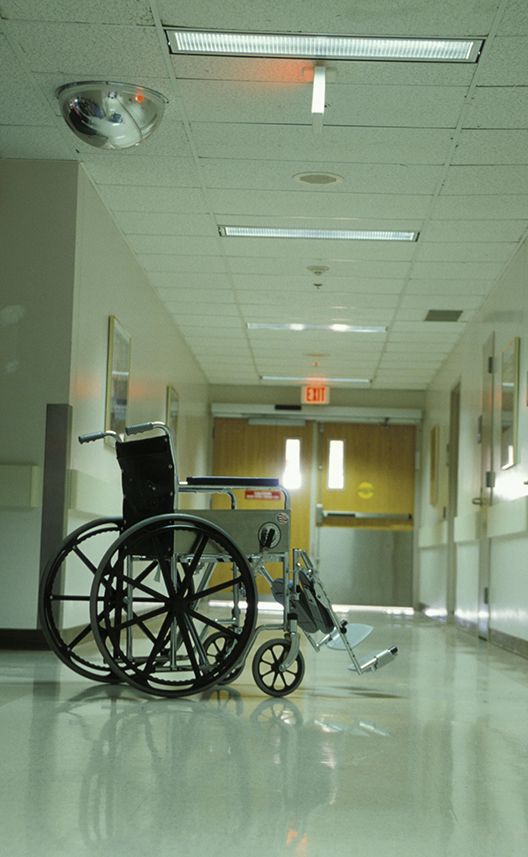User login
Reduced opioid prescribing did not correlate with inpatient pain management scores, a study has shown.
The Centers for Medicare & Medicaid Services announced recently that, as of 2018, pain management will no longer be rated in the Hospital Consumer Assessment of Healthcare Providers and Systems (HCAHPS) survey, citing concerns that patient satisfaction surveys given at the time of postoperative discharge incentivizes clinicians to over-prescribe pain medication. Surgical patients are key contributors to HCAHPS scores, and opioids account for almost 40% of surgical prescriptions, according to the study.
A new study throws some shade on the CMS decision to delete pain management from the HCAHPS survey.
Pain management scores were calculated as the percentage of patients who reported that their pain was “always” well controlled. The pain dimension was calculated from the number of opioid prescriptions and also pain management scores compared to national benchmarks. Hospitals were then grouped into quintiles according to opioid prescriptions measured in oral morphine equivalents. The first quintile has the lowest number of prescriptions.
Unadjusted comparisons showed no significant differences in pain management or pain dimension scores between the first and fifth quintiles of hospitals. For pain management scores that ranked hospital staff as always controlling pain, the first quintile had a mean score of 69.5 (95% confidence interval, 66.7-71.7) out of 100, compared with 69.1 for the fifth quintile (95% CI, 67.2-71.4). On a scale of 1-10, pain dimension scores in the first quintile averaged 1.9 (mean 95% CI, 1.5-2.0), compared with 1.4 in the fifth quintile (mean 95% CI, 0.9-1.9).
So, for these institutions, the number of pain prescriptions was not correlated with HCAHPS scores for pain management. The study suggests that the concern that reducing opioid prescriptions may have a negative impact on patient satisfaction assessments may not be realized.
Other analyses controlling for a variety of comorbidities also showed no correlations between pain management scores and opioid prescribing. Of the surgeries considered – orthopedic, general, gynecologic, cancer, cardiac, and vascular – gynecologic procedures were most likely to be associated with improved pain management and pain dimension scores.
Dr. Brummett disclosed relationships with Tonix and Neuros Medical. He also holds a patent for peripheral perineural dexmedetomidine. Mr. Syrjamaki and Dr. Dupree received support from Blue Cross Blue Shield of Michigan for their respective roles in the Michigan Value Collaborative. Dr. Waljee is an unpaid consultant for 3MHealth.
Reduced opioid prescribing did not correlate with inpatient pain management scores, a study has shown.
The Centers for Medicare & Medicaid Services announced recently that, as of 2018, pain management will no longer be rated in the Hospital Consumer Assessment of Healthcare Providers and Systems (HCAHPS) survey, citing concerns that patient satisfaction surveys given at the time of postoperative discharge incentivizes clinicians to over-prescribe pain medication. Surgical patients are key contributors to HCAHPS scores, and opioids account for almost 40% of surgical prescriptions, according to the study.
A new study throws some shade on the CMS decision to delete pain management from the HCAHPS survey.
Pain management scores were calculated as the percentage of patients who reported that their pain was “always” well controlled. The pain dimension was calculated from the number of opioid prescriptions and also pain management scores compared to national benchmarks. Hospitals were then grouped into quintiles according to opioid prescriptions measured in oral morphine equivalents. The first quintile has the lowest number of prescriptions.
Unadjusted comparisons showed no significant differences in pain management or pain dimension scores between the first and fifth quintiles of hospitals. For pain management scores that ranked hospital staff as always controlling pain, the first quintile had a mean score of 69.5 (95% confidence interval, 66.7-71.7) out of 100, compared with 69.1 for the fifth quintile (95% CI, 67.2-71.4). On a scale of 1-10, pain dimension scores in the first quintile averaged 1.9 (mean 95% CI, 1.5-2.0), compared with 1.4 in the fifth quintile (mean 95% CI, 0.9-1.9).
So, for these institutions, the number of pain prescriptions was not correlated with HCAHPS scores for pain management. The study suggests that the concern that reducing opioid prescriptions may have a negative impact on patient satisfaction assessments may not be realized.
Other analyses controlling for a variety of comorbidities also showed no correlations between pain management scores and opioid prescribing. Of the surgeries considered – orthopedic, general, gynecologic, cancer, cardiac, and vascular – gynecologic procedures were most likely to be associated with improved pain management and pain dimension scores.
Dr. Brummett disclosed relationships with Tonix and Neuros Medical. He also holds a patent for peripheral perineural dexmedetomidine. Mr. Syrjamaki and Dr. Dupree received support from Blue Cross Blue Shield of Michigan for their respective roles in the Michigan Value Collaborative. Dr. Waljee is an unpaid consultant for 3MHealth.
Reduced opioid prescribing did not correlate with inpatient pain management scores, a study has shown.
The Centers for Medicare & Medicaid Services announced recently that, as of 2018, pain management will no longer be rated in the Hospital Consumer Assessment of Healthcare Providers and Systems (HCAHPS) survey, citing concerns that patient satisfaction surveys given at the time of postoperative discharge incentivizes clinicians to over-prescribe pain medication. Surgical patients are key contributors to HCAHPS scores, and opioids account for almost 40% of surgical prescriptions, according to the study.
A new study throws some shade on the CMS decision to delete pain management from the HCAHPS survey.
Pain management scores were calculated as the percentage of patients who reported that their pain was “always” well controlled. The pain dimension was calculated from the number of opioid prescriptions and also pain management scores compared to national benchmarks. Hospitals were then grouped into quintiles according to opioid prescriptions measured in oral morphine equivalents. The first quintile has the lowest number of prescriptions.
Unadjusted comparisons showed no significant differences in pain management or pain dimension scores between the first and fifth quintiles of hospitals. For pain management scores that ranked hospital staff as always controlling pain, the first quintile had a mean score of 69.5 (95% confidence interval, 66.7-71.7) out of 100, compared with 69.1 for the fifth quintile (95% CI, 67.2-71.4). On a scale of 1-10, pain dimension scores in the first quintile averaged 1.9 (mean 95% CI, 1.5-2.0), compared with 1.4 in the fifth quintile (mean 95% CI, 0.9-1.9).
So, for these institutions, the number of pain prescriptions was not correlated with HCAHPS scores for pain management. The study suggests that the concern that reducing opioid prescriptions may have a negative impact on patient satisfaction assessments may not be realized.
Other analyses controlling for a variety of comorbidities also showed no correlations between pain management scores and opioid prescribing. Of the surgeries considered – orthopedic, general, gynecologic, cancer, cardiac, and vascular – gynecologic procedures were most likely to be associated with improved pain management and pain dimension scores.
Dr. Brummett disclosed relationships with Tonix and Neuros Medical. He also holds a patent for peripheral perineural dexmedetomidine. Mr. Syrjamaki and Dr. Dupree received support from Blue Cross Blue Shield of Michigan for their respective roles in the Michigan Value Collaborative. Dr. Waljee is an unpaid consultant for 3MHealth.
Key clinical point:
Major finding: No significant differences between top and bottom quintiles of 47 Michigan hospitals’ opioid prescribing patterns existed when comparing their HCAHPS scores.
Data source: Pharmacy and insurance claims and HCAHPS pain management for 31,481 surgery patients between 2012 and 2014.
Disclosures: Dr. Brummett disclosed relationships with Tonix and Neuros Medical. He also holds a patent for peripheral perineural dexmedetomidine. Mr. Syrjamaki and Dr. Dupree received support from Blue Cross Blue Shield of Michigan for their respective roles in the Michigan Value Collaborative. Dr. Waljee is an unpaid consultant for 3MHealth.

